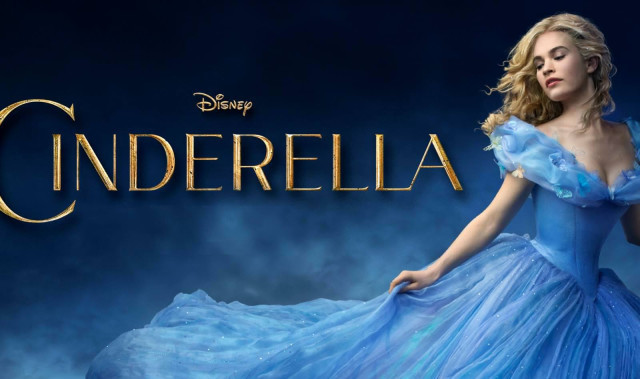In ‘La La Land’ Dreams, Dance and Choices Echo

Disappointed, it took me six years to grasp that this was not a movie or musical. This was a masterpiece.
If you want to experience a cinematic masterpiece that seamlessly blends music, dance, and emotion, “La La Land” is the film for you. Its visually stunning scenes, innovative storytelling, and deep emotional narrative create an unforgettable cinematic experience. But if you’re looking for a traditional plot-driven film with predictable storytelling, no more of it.
So, what makes “La La Land” stand out and offer a unique cinematic experience? The dreamlike atmosphere throughout the movie is created and aided by the amazing score.
While the dazzling choreography grabs our attention, the film’s more profound exploration of individual pursuits and their bittersweet consequences genuinely makes “La La Land” stand out. The film isn’t just a visual spectacle; it’s a poignant reflection on the sacrifices we make for dreams and the impact on the relationships that hold us dear.
Mia and Sebastian’s unwavering pursuit of their dreams reflects a harsh reality: individual success often comes at the cost of shared experiences and personal relationships. Their journey is paved with sacrifices for success, forcing them to confront the difficult choices that ambition demands. The film doesn’t shy away from portraying the bittersweet ending – they achieve their dreams, but their paths diverge, leaving a void where their shared future once resided.
This isn’t just Mia and Sebastian’s story; it invites us to consider our choices and their consequences. The film encourages us to ponder the trade-offs we make to pursue dreams, prompting a reflective look at our personal and professional aspirations.
But amidst the struggles, glimmers of hope shine through. Their mutual support and growth, evident in their encouragement of each other’s dreams, reminds us of the importance of companionship in achieving anything.
Yet, the film doesn’t sugarcoat the challenges. The sacrifice of their relationship is a stark portrayal of the complexities of balancing personal dreams and shared aspirations. It leaves us with a reflective ending, prompting us to contemplate: do their choices lead to fulfillment or regret?
Despite the challenges, naive optimism flickers within them. Fueled by this optimism, their resilience and determination reflect the spirit required to chase dreams. This spirit isn’t confined to individuals; the collective spirit of Los Angeles, captured in the opening number, reminds us that we’re all dreamers, united by the city’s promise of opportunity and ambition.
But dreams aren’t without shadows.
As we move from the city to Mia and Sebastian’s personal journeys, the personalization of dreams deepens. This shift allows us to explore the emotional costs and rewards of chasing dreams on an individual level. The atmospheric growth reflects this change, becoming more intimate and passionate as we dive into their struggles and the delicate dance of their relationship.
The tension between their ambitions and shared dreams hints at the conflicts they will face. This narrative technique, shifting perspectives between Mia and Sebastian, highlights their differing priorities and foreshadows the inevitable clashes.
But their connection isn’t defined solely by conflict. The progression of interaction from playful banter to an intimate dance symbolizes their deepening relationship. The classic dance style evokes a sense of synchronicity and harmony, capturing a moment of joy and understanding. As the dance progresses, their growing affection, reflected in their movements, underscores the hope for a future together.
But this hope is tinged with fear of separation. The interruption by Mia’s phone call serves as a stark reminder of the sacrifices they might have to make. The irony in the lyrics, contrasting the hopeful dance with a doomed relationship, further highlights the complexity of their emotions.
This complexity transcends words, capturing the essence of their shared dreams, struggles, and the flicker of hope for a future together. It reminds us that even the most beautiful dreams can be accompanied by costs.
Ultimately, the film offers a complex exploration of love, dreams, and sacrifice, reflecting the harsh realities of life and the challenges of achieving dreams.
The impact on tone with moments of hope and optimism offers a respite from the film’s predominant cynicism. This shift enhances emotional connection, allowing us to feel the characters’ emotions deeply. It also encourages the characters and prompts viewers to reflect on their lives, enabling them to maintain hope and optimism despite challenges.
“La La Land” doesn’t just entertain; it innovates. The film pushes boundaries within the musical genre, blending traditional elements with contemporary storytelling techniques. This musical innovation resonates with modern audiences, offering a fresh take on a beloved genre.
The film’s use of symbolism in colors further enriches the storytelling. The vibrant hues, often changing with the characters’ emotional states, reflect the highs and lows of their journey. The memorable soundtrack, featuring original songs like “City of Stars,” becomes an integral part of the film, enhancing the emotional resonance and staying with audiences long after the credits roll.
“La La Land” doesn’t just pay homage to classic Hollywood musicals; it reinvents them. It’s a cinematic homage that appeals to nostalgia and modern sensibilities, creating a unique and captivating experience.
Overall, “La La Land” stands out as a cinematic experience beyond visual spectacle and catchy tunes, leaving viewers with a lasting reflection on our choices and paths. It’s a film that stays with you, prompting you to consider your own dreams and the sacrifices you’re willing to make to achieve them.
©2024. Amil Imani. All rights reserved.


